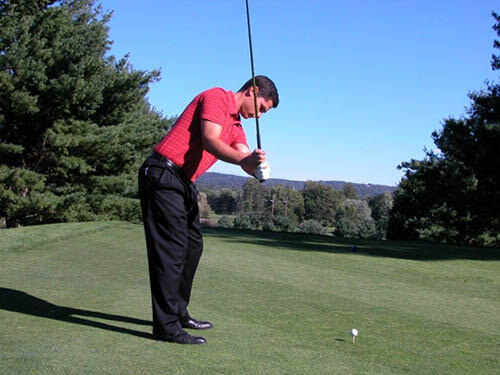Golf Swing Mechanics: A Game of Opposites
 A Legacy Post by Keiser University College of Golf Senior Faculty and Director of Research Dr. T. J. Tomasi (1940-2023)
A Legacy Post by Keiser University College of Golf Senior Faculty and Director of Research Dr. T. J. Tomasi (1940-2023)
Golf is filled with misconceptions, more so perhaps than any other game. Why – because the game is counterintuitive. Even though your brain is problem-solver par excellence, it’s often fooled when it comes to golf. Games like Frisbee or Kick the Can present “point-A-to-point-B” problems that are easily solved, so they require little, if any, instruction. But in golf, because you must stand to the side of the ball, the brain misinterprets the problem.
Golf Swing Misconceptions
Here are a few of the counterintuitive aspects of golf that make lessons a good idea for most golfers:
- The hips go to left field, the clubhead to right field, and the ball ends up going straight to center field. Go figure.
- You must hit DOWN on the ball to get the ball UP in the air.
- Your shoulders swing on one plane while the hips swing on another. Golf is one of the few sports where this puzzling “double plane” is a must.
- To stop the ball from going left, you must turn your hips to the left; i.e., in the direction, you don’t want the ball to go. But if you turn them too soon, the ball goes right. Try figuring that out without help.
- Through impact, the hands and handle of the club go to the left while the clubhead goes to the target. Thus, the hands and club handle move away from the target while the clubhead moves toward the target.
- In most other sports, our arms and body work together, but in golf, the arms do the up and down, and the body does the around, and they don’t get into each other’s business.
And then we have the mother of all puzzlements: The average golfer tries to get the clubhead onto the target line at the start of the downswing. This makes sense since that is where the ball is, but it causes the most common swing error in golf, called “over the top.” The good player learns to do just the opposite — keep the club off the target line until just before impact. In the photos here you can see the difference in shaft position. When you try to force the clubhead onto the target line too early, the shaft is steep, meaning that the arc of your swing is much too abrupt. It’s like trying to land a plane using an extreme vertical descent – unless it’s a helicopter, you’re in for a crash landing.

Golf Swing Examples
Note how this pro’s clubshaft is under his shoulder with the butt end of the club pointing at the ball. His hands are almost at impact, and the clubhead hasn’t swung out toward the ball yet — very counterintuitive, but a good way to play great golf!

By trying to force the club onto the target line from the top of his swing, this player creates a precipitous approach to the ball that won’t end well. To avoid an accident at impact, practice hitting the inside of the ball rather than the back of the ball. Of course, you don’t actually do that, but it’s better to fool yourself into doing something right than it is to practice something that is wrong.
Learn more!
Want more tips? If you want to take your game to the next level, contact our team at Keiser University’s College of Golf & Sport Management today. With our dedication and experience, we can elevate your game to new heights together. Give us a call today at 888-355-4465.














